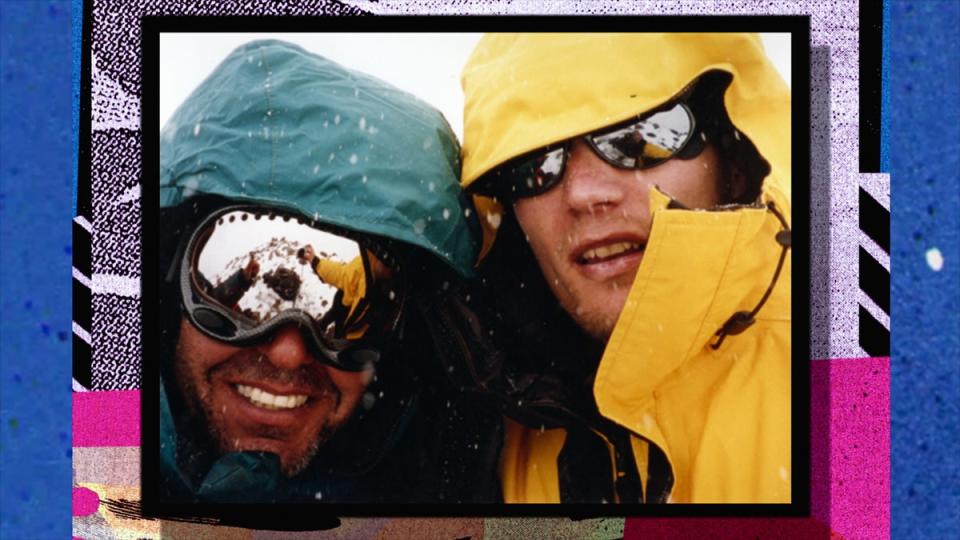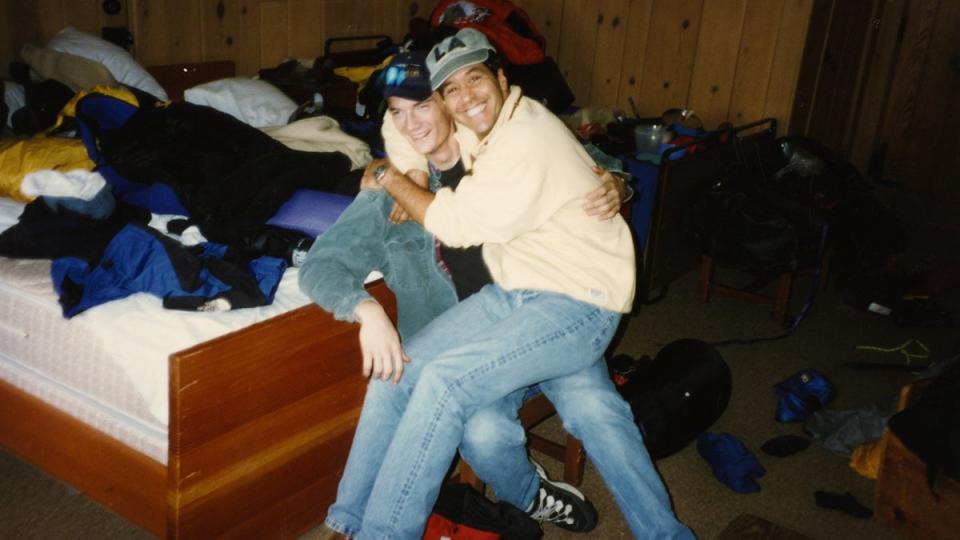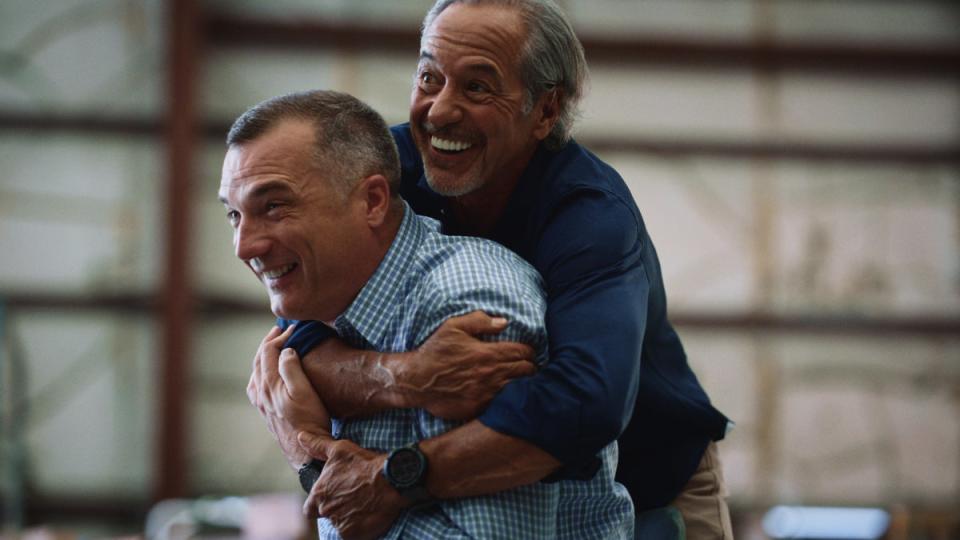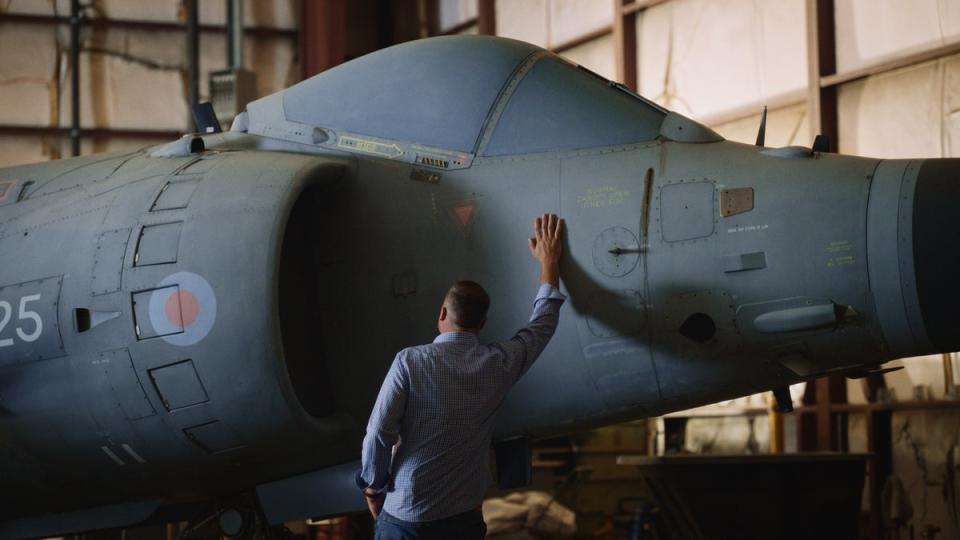They thought no one could drink enough Pepsi to win a military jet. Then John Leonard came along

For twenty-three years, John Leonard was known as the kid who sued Pepsi over a military jet. In 1995, Pepsi – engaged in a competitive battle against Coke so fierce it became known as the cola wars – started airing a television ad introducing the concept of Pepsi points.
The points could be collected from Pepsi packaging, and traded in against various items. A T-shirt cost 75 Pepsi points. A leather jacket cost 1,450 Pepsi points. The concept was straightforward and openly materialistic, summarized as such by the ad’s narration: “Now, the more Pepsi you drink, the more great stuff you’re going to get.”
Had the ad stopped there, it would likely not have gone down in the history books. But a few additional seconds of television prompted a headline-making legal battle, a court case still taught in law schools around the US today and, now, a new Netflix documentary casting a new eye on the saga.
Toward the end of the clip, a combat jet is seen landing in front of a high school. The camera pans to the commercial’s young, male protagonist, who, clad in a Pepsi- T-shirt and clutching a can of the soda, proclaims of the aircraft: “Sure beats the bus!” Wording appears on screen, reading: “Harrier fighter” and “7,000,000 Pepsi points.”
This last shot was, according to the legal world and a judge’s eventual ruling, obviously a joke on Pepsi’s part. To John Leonard, 20-year-old student from Seattle who dreamed of adventure, there was more to the ad than comedy. In his eyes, the ad – devoid of any fine print – was an opportunity.

Leonard assembled the requisite number of Pepsi points and sought to trade them in for a Harrier jet, a British military aircraft primarily used in the US by the Marine Corps. (More, much more on this below.) Pepsi refused. The two ended up facing off in court.
Mention the Pepsi lawsuit case to just about anyone, and a few questions usually surface: How could John Leonard not think this was a joke? Was this a cynical cash grab? What would he have done with a fighter jet? Can a civilian even legally acquire a military plane?
A new Netflix documentary, Pepsi, Where’s My Jet? answers all these questions and more. Through interviews with a variety of protagonists, including Leonard himself, it paints a much more nuanced, and often more innocent, picture of the case. It also offers a debunking of sorts, bringing to the forefront a series of elements that people who know about the lawsuit generally aren’t aware of – such as the fact that in the legal battle between Leonard and Pepsi, Pepsi technically struck first.
“What is so misunderstood is people try to say, ‘This kid took advantage of the legal system.’ And it’s like, no. Pepsi sued me,” Leonard says in a video call with The Independent, a couple of days before the documentary’s release.
Prior to Pepsi’s filing, Leonard’s side had threatened legal action. (“If we do not receive transfer instructions within [10] business days of the date of this letter you will leave us no choice but to file an appropriate action against Pepsi,” states a letter quoted in the judge’s ruling.) Pepsi then filed a lawsuit “seeking a declaratory judgment stating that it had no obligation to furnish plaintiff with a Harrier Jet,” per Judge Kimba Wood’s final opinion and order. That case was filed in July 1996. Leonard brought his own lawsuit the following month. In other words, before Leonard v PepsiCo (as the case is most often remembered), there was PepsiCo v Leonard.
“There was this kind of sub-story that somehow I was trying to use the media,” Leonard adds during our call. “And again, that’s totally false.” The only reason the media learned about him, he says, was Pepsi’s own court filing. “I hadn’t thought that far,” Leonard tells me. “We’d never talked about any media interest or anything.”
So, how did this all begin for Leonard? In the mid-nineties, as he says in Pepsi, Where’s My Jet, he developed a passion for mountain climbing and was “trying to figure out a way to climb the highest mountains in the world”. He wanted to “see different places”, “experience different cultures”. To him, “money was freedom” and it held the promise of “more adventures, more fun.”
When Leonard first saw the Pepsi Points ad on TV, he saw it as his way out – “a legitimate opportunity to change [his] world,” he says in the documentary. While pop culture has remembered Leonard as somewhat of an outlier in the Pepsi Points narrative – the only man to take the ad seriously – that’s not how he saw it at the time.
“I was concerned that a lot of people were trying to do this,” he says during our conversation.


On a climbing trip, Leonard met Todd Hoffman, a businessman who had acquired a fortune across several industries. The two struck up a friendship. Leonard ultimately pitched the Pepsi Points idea to Hoffman. After a trial-and-error phase detailed in the documentary, the two realized they could buy seven million Pepsi points for about $700,000. They sent a check. Pepsi balked. And we’re back to the legal battle.
Pepsi, Where’s My Jet? makes clear that Leonard didn’t rush into this whole thing without giving it a second thought. He says in the series that he called the Pentagon to check that a civilian could legally acquire a Harrier Jet, and was told yes, as long as the aircraft was stripped of any armaments. He thought about what he would do with the jet in order to turn it into a lucrative opportunity, dreaming up a plan to take it to air shows, or rent it out for films and ads. Throughout the documentary, Leonard and Hoffman are portrayed as a dynamic duo engaged in a slightly absurd quest, clearing one hurdle after the other as long as they could. Where many have viewed cynicism, the documentary – and Leonard’s own testimony – inject the story with a certain naivete, and a sense of wonder.
This, to director Andrew Renzi (whose previous credits include the 2021 documentary The Curse of Von Dutch: A Brand to Die For, on which he was an executive producer), was key to the story.
“The biggest thing that I was looking to – not necessarily debunk, but to illustrate, was that I really developed an opinion of John where I believed him, and I believed in him,” Renzi tells The Independent on another video call, also a couple of days prior to the show’s release. “This is just a young man who really wanted to try to reach for the stars. He wanted an adventure and it was really an uncynical, kind of slightly naive pathway to what he perceived as success. He wasn’t an ambulance chaser. I believed him, and I believed in that spirit, and I loved that spirit.”
During our conversations, Renzi and Leonard both reference the McDonald’s hot coffee case, another misremembered page of American legal history. It’s often, albeit incorrectly, painted as the story of a woman who sued McDonald’s for an absurd amount of money (people usually say $1 million) because she burnt herself on a hot coffee from the fast food chain. In reality (as described in the You’re Wrong About podcast episode about the case), she suffered third-degree burns, required extensive medical treatment including hospitalization, and was trying to recoup her medical expenses. After a trial, a judge reduced her awarded damages to $640,000, and both parties ended up settling for an undisclosed amount.
Pepsi, Where’s My Jet? includes moments that serve to similarly paint a more complex picture of the Pepsi Points legal saga. Without revealing too much here, think: another controversial marketing campaign outside of the US, a surprise cameo in Leonard and Hoffman’s advisory team, and revelations about the genesis of the ad itself.

The documentary also serves as a fable of American capitalism: Leonard and Hoffman, in their eventual battle against Pepsi, rely on a brand of daring entrepreneurialism that is often rewarded in the US, or at least associated with success. Leonard emerges as a zany David to Pepsi’s Goliath.
Now, Leonard, who is just shy of 48 when we speak, lives a “really nice, enjoyable life.” He works as a government employee. He and his wife have been together for two decades. They have two children. He has been involved in the documentary for the past two years, which has been “a little bit of unexpected fun.”
Participating in the series, he says, has helped him become “less bashful” about the idea of opportunism. “I was being opportunistic, and that’s not a negative thing,” he says on our call. “... Being opportunistic while being intellectually honest and laying your cards on the table – there’s absolutely nothing wrong with that. This project has brought me to terms with the idea that there shouldn’t be any shame in what I did when I was 19 or 20. Shame is probably too strong a word, but maybe a little embarrassment.”
To Renzi, the project became a “friendship story” once he managed to get in touch with both Leonard and Hoffman. When I ask him which side of the legal battle he personally landed on – Leonard’s or Pepsi’s, he tells me he “never really cared” about that aspect of the story.
“Obviously, I respect [judge Wood.’ She clearly knows how to do her job, and I’m not going to sit here as sort of an armchair expert,” he says. “But what I can say is that you’re never again going to see a commercial that does this. It just will not happen. So regardless of whether he gets this jet, there was a change that was made. And you appreciate the journey much more than you actually appreciate the outcome.”
Pepsi, Where’s My Jet? is streaming now on Netflix in the US and in the UK.

